Foundations: Strength in depth
04 September 2019
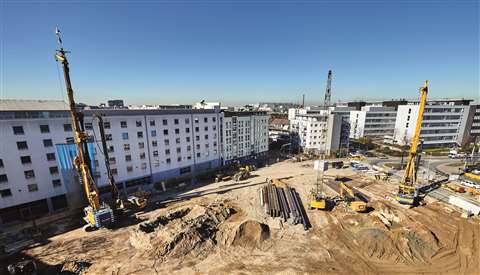
Whether fabricated from reinforced concrete, steel or wood, modern foundations must be meticulously designed to withstand the various forces buildings will place on them.
Apart from the piles themselves, the strength of a building’s foundations will largely depend on geomechanics, with lengthy subsoil and/or rock testing required before a foundation strategy can be chosen.
This is where construction work begins in earnest and, along with ground preparation work, can be one of the most time-consuming elements of a project.
As the type of footings required can differ greatly, so can the equipment used to embed them in the ground.
Within its MITO series, Fraste has a range of drilling machines for foundation work, including its recently unveiled MITO 100 TB.
The company promotes the rig as a machine that can work with all known drilling techniques, including the use of tie rods, anchors and micro-piles.
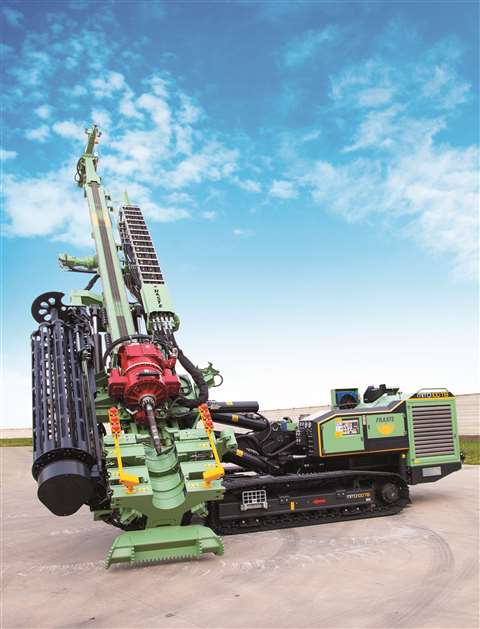
The rig has an on-board assembled drill pipe loader that allows simultaneous advancement with drilling rods and casing pipes, with radio-controlled operation offering speedier progress, as well as enhanced safety for the operator.
The rig’s hydraulic systems allow for a range of drilling and pumping systems, ranging from 4.5 tonnes to 32 tonnes, and it includes a separate hydraulic unit for operations in confined spaces within buildings, basements and tunnels.
Larger drills are capable of working with up to 35,000 Nm of torque, or rotary travel up to 12m, which can be used for jet grouting up to 25m in a single pass.
Fraste says all of its rigs in the MITO series have Cat Tier 4 final engines and are constructed in compliance with EC regulations.
Tall buildings - deep insertions
As skyscrapers reach higher and become heavier, so pilings must be inserted deeper into the ground, resulting in a greater margin for error.
Irregularities in the drilled shafts or deviation from the required angle, will mean less support for the structure above.
Pile Dynamics Inc (PDI) has introduced SHAPE, the shaft area profile evaluator, offering a quality control measure for the radius, volume and verticality of deep foundation shafts.
PDI’s president, George Piscalko, said, “We felt the market needed a modern and rugged device where we eliminate common points of failure such as electronic cables running from the surface to the device to provide increased accuracy and performance.”
The SHAPE device provides a representation of the foundation excavation and verticality, ahead of the placement of piles.
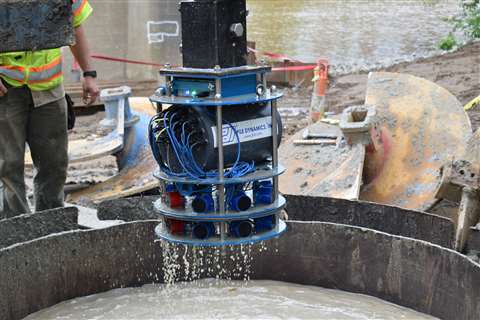
PDI says the drilling stem advancement rate of SHAPE is approximately 300mm per second and the wireless device produces 3D profile views for analysis.
The device automatically corrects for wave speed with depth by measuring the excavation, adjusting the radius calculation based on the measured wave speed at any depth.
Ensuring the quality of the foundation shafts, of course, is meaningless unless the quality of the piles within them is also guaranteed.
Call in the marines
Ground engineering contractor Expanded Geotechnical, part of the Laing O’Rourke group, won the contract to lay the foundations for the first buildings at Wood Wharf in East London – an ambitious nine hectare residential project, incorporating a number of skyscrapers.
Some elements of these buildings were to be built over water, requiring Expanded Geotechnical to bore steel cased marine piles directly into the bed of the wharf’s basin.
Deep bored base-grouted piles were also installed on land reclaimed from the former dock. These methods allowed the construction of the 60-storey A1 tower at the heart of the project, installing foundations capable of supporting their immense weight and significant lateral loads.
ESG – now Socotec – was asked to assess the piles by load and integrity testing during the course of the project. In addition, ESG provided compressive strength testing of the concrete used in the foundation piles. All of this had to be carried out in an extremely time-sensitive manner and alongside other construction projects in the area, to ensure there was no delay to the rest of the project.

On land, ESG’s team of consultants tested the large diameter base grouted piles that formed part of the building foundations - created by auger boring deep shafts, into which steel reinforcement cages are installed prior to being filled with concrete.
Base grouting enhances the axial load-bearing performance of auger-bored pile foundations. ESG tested the concrete to be used off-site, including both slump and concrete cube testing, which assess the quality of the concrete over time.
Other testing methods employed on-site by ESG, included thermal integrity profiling, in which thermal sensors are attached to the reinforcement cage of the pile during installation, to record the heat generated by the curing process.
Sonic logging was also used, a method employed seven or more days after curing. A transmitter and receiver are lowered to the bottom of the pile through access tubes in the concrete, before sound waves from the transmitter to the receiver, recording variances, which can indicated quality issues.
Electric rig
Deep foundation drilling rigs are large machines and one would generally expect them not to be the most environmentally friendly pieces of construction equipment.
Yet German construction giant Liebherr unveiled the world’s first battery-powered deep foundation drilling rig earlier this year; the LB16 Unplugged.
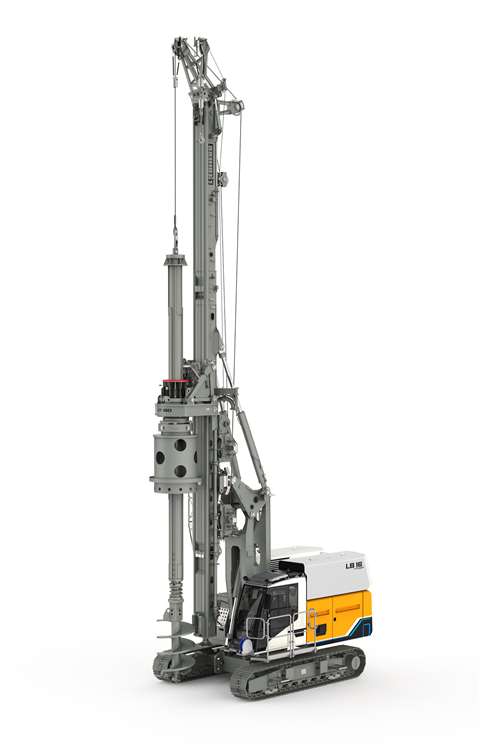
With a 55 tonne operating weight, a maximum drilling depth of 34.5m and a maximum Kelly drilling diameter of 1,500mm, the new machine matches its predecessor blow for blow.
It also incorporates a counterweight, compensating for the difference between the battery version and its diesel engine predecessor. Because of this, Liebherr says no recalculations were necessary, in terms of the machine’s behaviour on site.
The rig’s motor generates an output of 265kW of power, and its battery is designed to run for a complete 10-hour working day, delivering 180kN/m of torque, before being recharged via a conventional jobsite power supply, with a fast-charging time of around seven hours.
The Unplugged rig is currently operating on a site close to Liebherr’s factory in Nenzing, Austria, and the operator has reported that it has a surprisingly strong torque constant. Liebherr states the maximum torque for the rig is 180kNm.
While there are obvious environmental advantages to the rig’s local zero emissions, the electric motor also delivers a reduction in the machine’s noise, of increasing importance due to increasingly strict regulations for operations in urban environments.
Wolfgang Pfister, head of strategic marketing & communications at Liebherr, told Construction Europe, “Noise is one of the constraints you have in inner cities and, given the fact that they [LB16 unplugged rigs] have roughly no noise emission…there’s a huge potential that these machines in the future will be allowed to work the normal shifts in inner cities, rather than other machines.
“This is a huge benefit. It’s not just the reduction in fuel consumption – and this should be an argument in the future for construction companies, that once the authorities limit noise in inner cities…you can still work normal shifts with these machines – and then the initial price is not this dominant factor anymore.
“The design of this machine and the design of the accumulator was based on about 100 machines that are already operating in the field. We said if this design of the accumulator goes fine with 70% of all cases, this is a lot. Not just half, but 70%. What we promise is eight hours steady operation on an average Kelly drilling operation, which is very good. No one really believed that, when we said eight hours all in one.”
Congested conditions
Diaphragm walls are often the best method of digging foundations when sites are congested or are close to existing structures. Suitable for most subsoils, they generate minimal vibration and noise, making the process ideal for work in built-up areas.
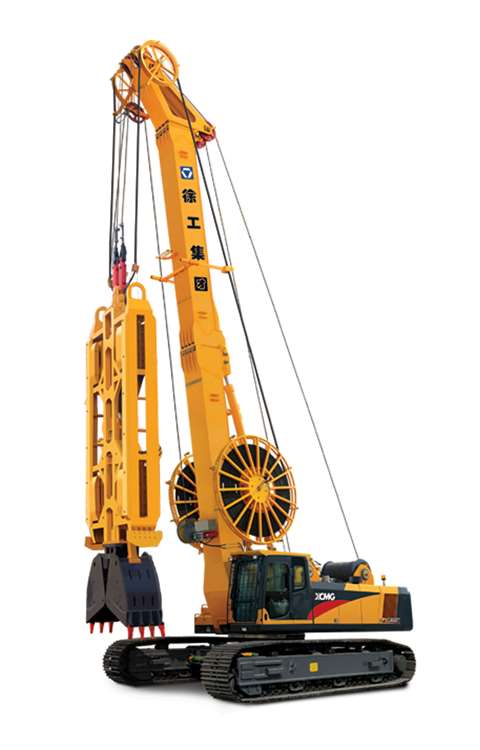
Generally speaking, the excavation of a diaphragm wall is carried out in ‘bites’ made by a grab attachment.
XCMG offers three different grab types, making trench widths of between 300mm and 1,500mm.
The company’s largest grab is the XG700E, with a power rating of 315kw at 1900rpm. Capable of digging trenches to a depth of 105m, the machine has a maximum operating weight of 133,000kg and a maximum lifting force of 700kN.
As the soil is removed from the excavation, bentonite is pumped in to support the surrounding soil and prevent collapse.
Once the grab has completed excavating, steel or concrete stop ends are inserted, before a prefabricated reinforcement cage is lowered into position between them.
Finally, concrete is poured into the excavation, rising from the bottom and displacing the bentonite, which is pumped to a recycling plant.
——————————————————————————————
Aarsleff gives support to a Swedish tower
Within the under-construction district of Karlastaden in Gothenburg, Sweden, a joint venture between Aarsleff in Denmark and Aarsleff in Sweden recently undertook the piling for a 245m tall Karla Tower residential development.
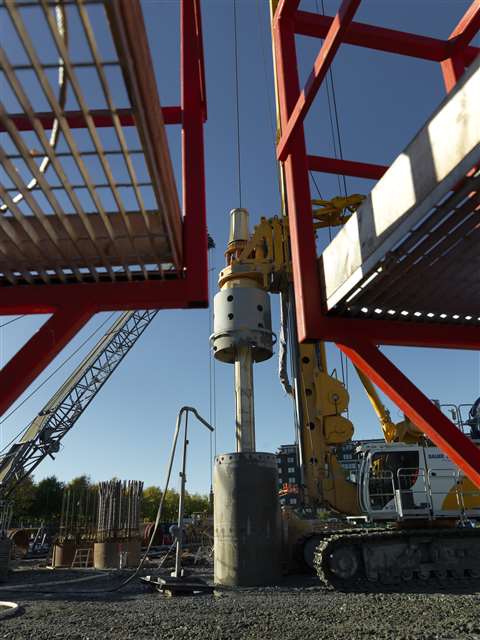
The 57 required piles were installed, first by drilling a casing pipe down to the bedrock and then drilling an additional 7m into the rock.
Once the 2000mm diameter piles had been bored, the team poured approximately 11,000m3 of concrete – and utilised almost 813 tonnes of reinforcement for the foundation construction works.
Aarsleff first became involved in the project in 2015, when the company was asked to determine whether the skyscraper could be supported by foundations, given the challenging geotechnical conditions in Gothenburg.
The bedrock lay between 55m and 75m below ground level, with low strength clay between, plus further difficulties, including large stones.
Aarsleff overcame these challenges by using the Kelly method to drill to the rock, before changing the tool to bore into the bedrock – making these the largest and deepest piles in Sweden.
Furthermore, the load specifications for the piles were a huge achievement for Aarsleff, with each able to carry 4,500 tonnes, compared with a ‘regular’ pile, which normally carries about 150 tonnes.
In total, the cost of the Karlastaden district project is estimated at SEK13 billion (€1.2 billion), with an expected delivery time of six to seven years.
——————————————————————————————
The power of Bauer
At the north end of Dusseldorf in Germany, Bauer recently carried out foundation engineering and earth works at a 120m-high residential tower, the tallest of its kind in Dusseldorf and the third tallest skyscraper in the city.
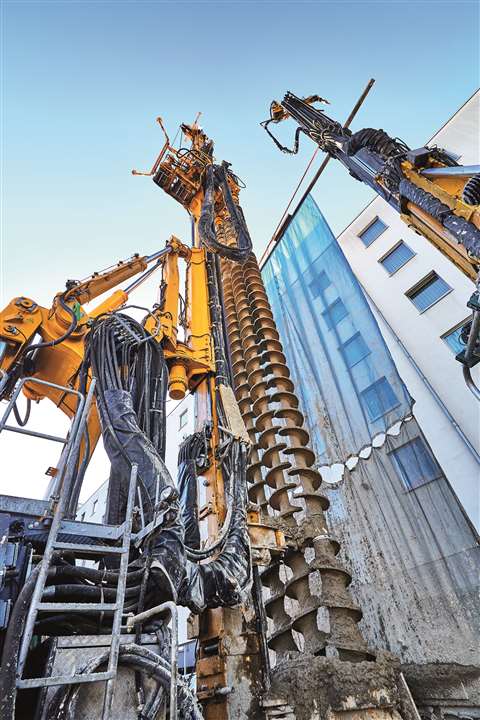
The UpperNord Tower will provide around 29,200m² of floor space over 36 floors. The floorspace will predominantly be given over to 432 residential units, with plans also for ground-floor restaurants, a three-storey underground car park and an adjoining five-storey hotel.
Approximately 6,000m2 of shoring wall for the retaining structure was constructed, using the low-vibration mixed-in-place (MIP) method, with the in-situ soil being mixed with a binding agent.
Bauer chose to use a continuous flight auger to produce a homogeneous soil concrete. The company said the method conserves resources, bringing both economic and ecological benefits to the process.
Bauer drilled to depths of up to 23.5m, then installed 700 tonnes of reinforcement in the shape of inserted 22m-long double steel beams.
During the work, Tim Erkens, operations manager at Bauer Spezialtiefbau, said, “In order to secure this impressive excavation, an additional 5,300m of anchors with three to six strands and drilling lengths of up to 24m will be installed.”
A KR 806 anchor drill rig from Klemm Bohrtechnik was used for the anchoring work, while an RG 25 S rig from Rammtechnik undertook the MIP work, and an RG 16 took on the reinforcement drilling.
——————————————————————————————
A little faith and a Klemm rig
In Belgium, the contractor CVR was asked to undertake foundation work within a Catholic church being renovated near Brussels in Belgium.
The existing foundations of the church had to be extended, transferring the load of the building to lower layers of earth, before restoration work could begin.
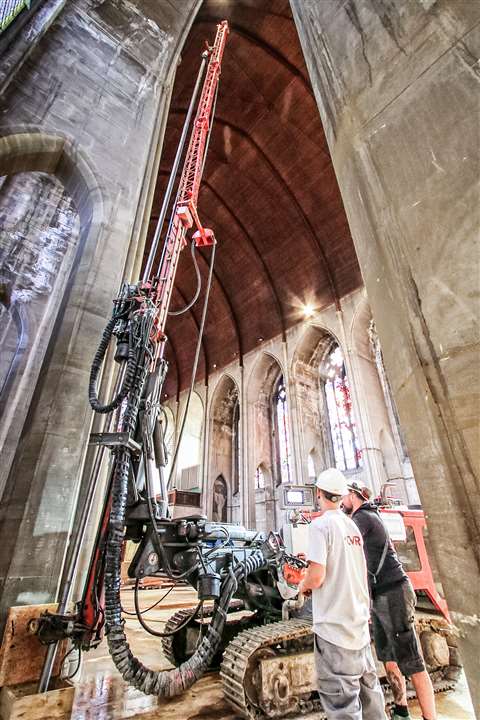
CVR brought in a KR 801-3FS drill rig from Klemm Bohrtechnik, to make micro-piles and cement columns, using the one-phase jet grouting method.
The operation calls for high velocity jets (potentially cement grout with optional water and air) to flow from ports in the drill head. The grout mixes with the soil at the drill stem rotates and rises.
In the confined space of the church, a rig with compact dimensions was required, as well as one that could align its drill mast in a wide range of gradients and distances in front of and to the side of the rig itself.
Klemm’s KR 801-3FS was able to drill down to 13m in a single pass, before the drill rods were driven by a rotary head, fitted with a hydraulic mandrill.
A total of 123 HPI piles, with diameters of 700mm and 900mm, and a length of 8.5m, were drilled. The load was 560kN for the 700mm diameter piles and 1,111kN for the diameter 900mm piles.
——————————————————————————————
Tower crane foundation guide
Buildings are not the only structures on a construction site requiring foundations; tower cranes also need stabilisation at ground level, as well as above.
UK-based not-for-profit body Construction Industry Research and Information Association (CIRIA) has published a new guide called Tower Crane Foundation and Tie Design.
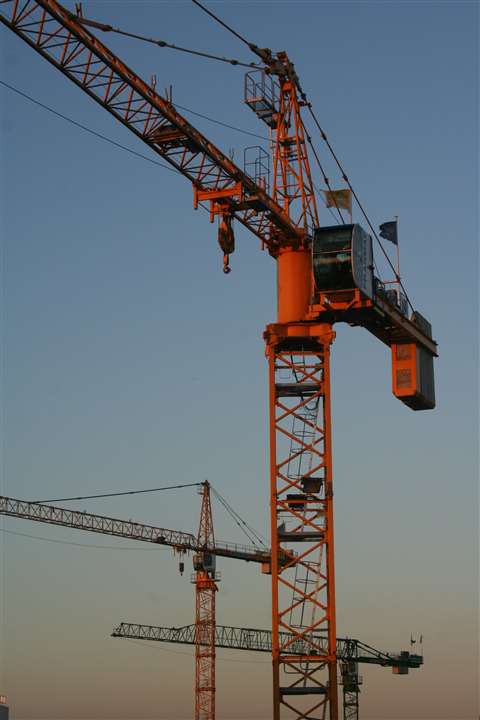
The guide aims to present best practice based on the experience of a wide cross-section of the industry and bring together important practical and design issues that affect health and safety. The guide is Eurocode compliant and is intended to promote the safe design and construction of foundations for tower cranes through an improved understanding of temporary works design and related health and safety issues.
The guide’s initial sections are aimed at those who need to understand the issues related to their safe use, such as temporary and permanent works engineers, site managers, site supervisors, geotechnical engineers, architects and planners. It also highlights key situations where a specialist should be consulted. Specific guidance for designers of temporary works involving tower cranes is given. Issues include: the understanding of wind effects; other loading and support considerations; and factors of safety and design of foundations. This also includes calculations for typical situations.
The guide was authored by independent engineering consultant Tim Watson and Stuart Marchand, managing director of specialist temporary works consultancy Wentworth House Partnership.
According to Watson, “This latest version of the guidance is an essential reference for all those involved with the planning, procurement, installation and dismantling of tower cranes. In particular, the document provides a comprehensive reference for base and tie designers using the Eurocode approach.
“The guidance which does not, to my knowledge, exist elsewhere, offers in a concise form, a wealth of experience which should be invaluable to young engineers and designers




